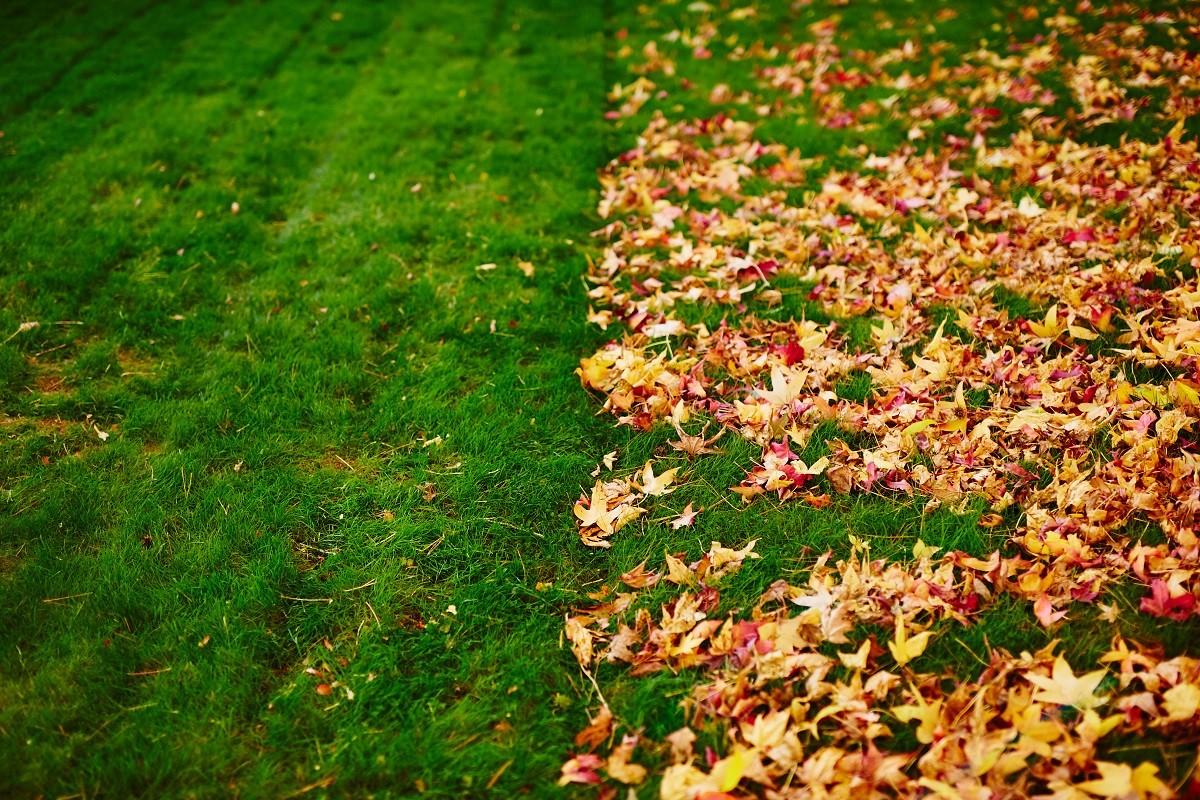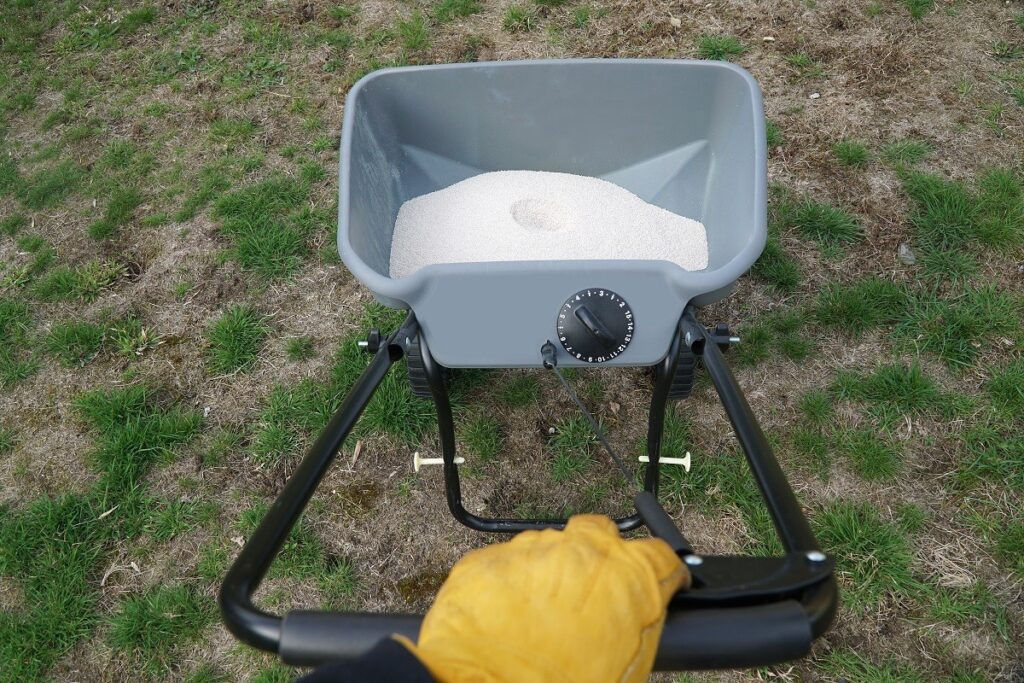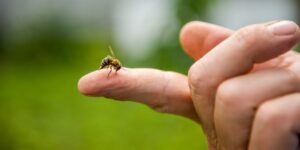Tip #1 – Don’t leave your leaves
The exquisite foliage of fall is surely one of nature’s greatest displays, but as the leaves fall, they can also destroy your lawn by blocking sunlight, suffocating the grass, and even welcoming fungi and other issues. Instead of leaving your fallen leaves until the end of the season, clear them away weekly and absolutely get them up before excessive rain or snow occurs.
Secret: Use a mulching mower. This will help save your lawn (and your back) and mulching the leaves can feed your lawn and prevent weed growth. Just make sure the leaf pieces aren’t too big where they can still cause damage to your grass.
Tip #2 – Keep on mowing

While you might want to stop mowing your grass – and get your weekends back – you should continue to give your lawn a fresh cut through the season. You’ll want to cut the grass blades a bit shorter in fall than in summer as this will help to keep your grass healthy, stop weed growth, and possibly prevent damage from leaves.
Tip #3 – Give your lawn some breathing room
If your lawn has seen its share of wear and tear, you might want to give it some air through aeration. Aerating breaks up the soil, so air, water, and nutrients can help keep your grass healthy.
Fall is the best time to aerate and overseed a lawn in the North, and it’s relatively simple to do with a spike, plug, or core aerator. Ideally, you want to remove “soil plugs” that are 2 to 3 inches deep, up to .75 inches in diameter, and 2-3 inches apart. Just make sure to prepare your lawn by watering it before you begin. Either aerate the day after a rainstorm or water your lawn the day prior.
If you live in the South with warm-season grasses, hold off aerating your lawn until spring.
Secret: Fall is also the ideal time to overseed in the North, making this one of the fall lawn care tips to do right now! (In the South, spring is the best time – seeing a pattern here?) Overseeding a lawn helps to reinvigorate a worn-out lawn and return it to its former glory.
Tip #4 – Give your lawn a drink
Lush green grass doesn’t grow if your lawn is thirsty. Keep tabs on the amount of precipitation that your lawn sees, and if it’s under an inch a week, consider giving your grass a shower. You may only need to do this a couple times before the soil freezes in early fall, and you absolutely should not do it once the colder temperatures set in.
If the heat persists throughout fall, water in the morning, so the moisture is less likely to evaporate.
Tip #5 – Feed your grass

Cool-season grasses such as Kentucky bluegrass, ryegrass, and fescue perform best between 60 and 75°F, so fall is the perfect time to feed your grass – in the North, that is. Depending upon which type of fertilizer you use, you may need to apply it in early September and include it in your October lawn care plans. Other types of grass require you to distribute fertilizer right before the first frost or snowfall.
Of course, warm-season grasses can be more complex. Some grasses, such as Common Bermuda or Hybrid Bermuda, require fertilizing in late spring and again in fall, while others require fertilizing in early spring and early summer.
Always read the directions of your chosen fertilizer and act accordingly.
Secret: Fall is also a great time to fill in gaps in your cool-season lawn with mulch, seed, and fertilizer.
Tip #6 – Say good-bye to weeds
If you don’t get rid of your weeds now, they’ll stick around in warm environments and return in the spring in the cold(er) environments. Say good-bye to clover, dandelion, crabgrass, and other perennial weeds with a pre- and post-emergent herbicide. (Pre-emergent is just like it sounds – you get rid of the weed before you see them; post-emergent means you take care of the weeds after they show.)
Treat your lawn before temperatures drop below 50°F, and always read the directions! Not all herbicides are healthy for all lawns, so you’ll need to choose the one that’s right for yours. When in doubt, always call a lawn pro.
Tip #7 – Get rid of grubs
If you’re starting to see animals dig in your yard or brown areas of your lawn (not due to excessive heat), then you might have a grub problem. Find out by digging up about a foot of your yard. If you see tiny white worm-like beings that curl into C, then you have grubs.
Depending on the number of grubs, you may decide to do nothing. A tiny number of grubs is tolerable for most yards. If you notice a higher number (more than 10), consider treating your lawn with natural remedies or even insecticides.
Secret: If you’re O.K. with your lawn getting a tan, consider holding off watering your lawn during times of higher temperatures. Grubs loathe hot, dry environments, and a dry lawn may solve your grub problem.
Get more fall home maintenance tips now!
Stay on top of home maintenance
Homeownership can be hard, but it doesn’t have to be. The vipHome.app can help. In less than four minutes, enjoy a new way to manage your home. Simply download the app, register your home, and enjoy a simplified homeownership experience.





